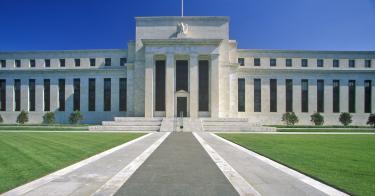On Tuesday, George Selgin will visit the Heritage Foundation to discuss his new book, Floored!: How a Misguided Fed Experiment Deepened and Prolonged the Great Recession. I’ve written a bit about the issue, but Selgin’s book is easily the most in-depth explanation of the Fed’s new operating framework and its implications for monetary (and fiscal) policy.
Another big event on Tuesday is day one of the Federal Open Market Committee’s (FOMC’s) first meeting in 2019. In the days that follow, Fed-ophiles everywhere will analyze to death the statement and press conference that follow the meetings, especially as they relate to interest rates.
Fed-ophiles should take a break, though, and direct more scrutiny to Selgin’s work.
For starters, as Floored! points out, the federal funds rate is all but meaningless right now, relative to what it was in the pre-crisis system. Floored! also takes a close look at the Fed’s new framework – the floor system – and reveals some troubling facts. Some of the main points are as follows.
- The floor system is a form of credit allocation, and it amounts to financial repression. In other words, the Fed’s actions are no longer designed to minimize their effect on private credit markets. To some extent, the Fed’s new operating system prevents financial firms from operating at their full capacity.
- The Fed is paying above (short-term) market interest rates on banks’ excess reserves, a move that clearly violates the spirit (and, to these eyes, the letter) of the statute that authorizes the Fed to pay interest on reserves. To stick to the technical requirements of this statute, the Fed relies on its own definition of short-term interest rates that includes the primary credit rate, a rate that the Fed intentionally sets “above the usual level of short-term market interest rates.”
- The floor system is inherently contractionary, making it much harder for the Fed to boost the economy during a recession. When it was first put into place, the entire premise of the new framework was that it would prevent all the Fed’s newly created reserves from getting out into the broader money supply. The whole point was to pay banks to sit on excess reserves rather than lend them out. Compared to the pre-crisis framework, the Fed will have to create more reserves – possibly much more – to induce the same amount of new bank lending.
- The size of the Fed’s balance sheet is now divorced from its monetary policy stance. In the pre-crisis framework, the Fed was able to stave off pressure to buy assets due to inflation concerns. It is no longer the case, however, that the Fed’s asset purchases will lead to the same level of broad money creation. The Fed can now hold trillions more in assets while keeping inflation at bay, thus making it more vulnerable to political pressure.
Hopefully, a few enterprising journalists will ask Chair Powell – or other FOMC members – about these issues. Even better, maybe they’ll press Powell on whether this new operating framework will be part of the Fed’s upcoming strategic review.
Aside from all of these points, the Fed has some serious explaining to do regarding precisely how its monetary policy actions work.
Prior to the crisis, according to the Fed, the federal funds market was the key to monetary policy. The Fed’s goal was to use open market operations to influence the supply and demand for bank reserves, thus altering the federal funds rate. In the Fed’s own words:
The federal funds rate is the interest rate at which depository institutions lend balances at the Federal Reserve to other depository institutions overnight. Changes in the federal funds rate trigger a chain of events that affect other short-term interest rates, foreign exchange rates, long-term interest rates, the amount of money and credit, and, ultimately, a range of economic variables, including employment, output, and prices of goods and services.
Thus, influencing a key rate in the private market – the federal funds rate – was the key to the whole operation. (Here’s a similar explanation by the St. Louis Fed.) Now, due largely to the Fed’s floor system, the federal funds market cannot possibly have such a high level of importance. The lending volume in the federal funds market remains near a 40-year low, and what little activity there is in the fed funds market is entirely different from the reserve-meeting activity that used to take place.
Maybe someone should ask Chair Powell why the Fed is still worried about targeting the federal funds rate even though that interbank lending market is essentially dead. (Here are some additional questions for the Chairman, for anyone interested).
The Fed has implemented a completely new operating framework, shifting from a lender of last resort to a borrower of first resort. It is now paying banks to hoard reserves, and those payments will escalate quickly if short-term interest rates get back to their historical averages. Making matters worse, it very well may have neutered the effectiveness of monetary policy.
A great deal of praise has been heaped on the Fed’s ongoing efforts to normalize monetary policy, but there is nothing normal about what the Fed is doing. Truly normalizing monetary policy means undoing all of the changes instituted to respond to an abnormal crisis. And to do so without creating a recession, the Fed has to shrink its balance sheet and stop paying banks not to lend.
So far, there’s virtually no reason to think that the Fed will move in this direction.
This piece originally appeared in Forbes https://www.forbes.com/sites/norbertmichel/2019/01/27/fed-ophiles-should-focus-on-feds-rate-tool-not-fomc-rate-hikes/#787c12143a03



